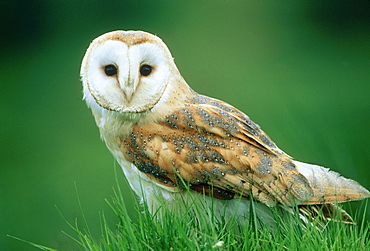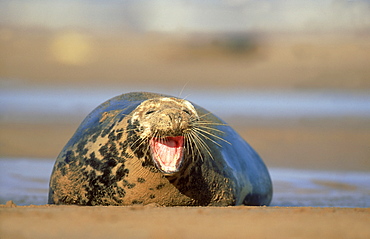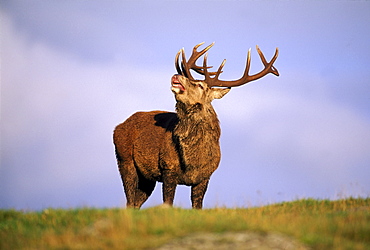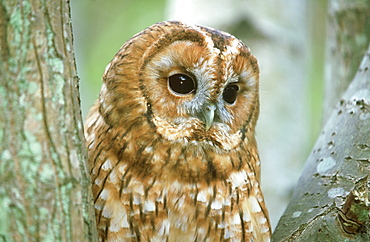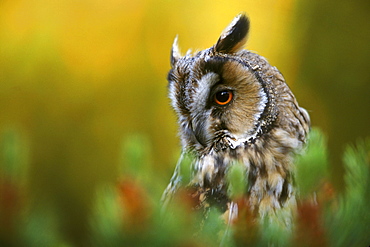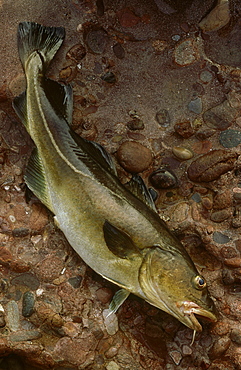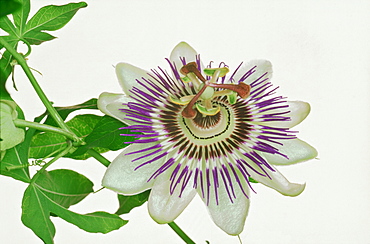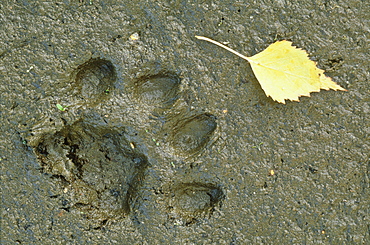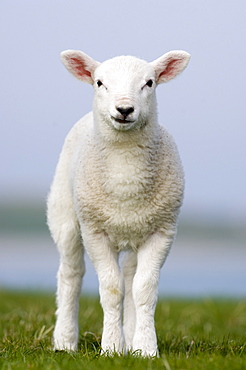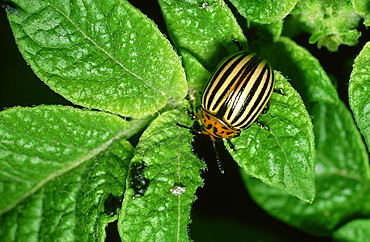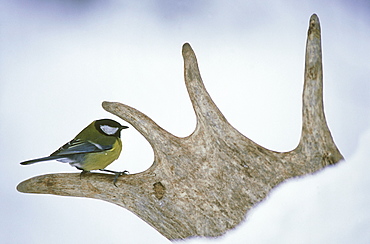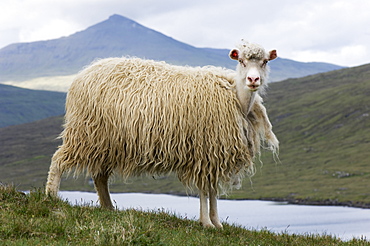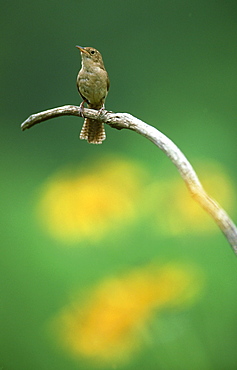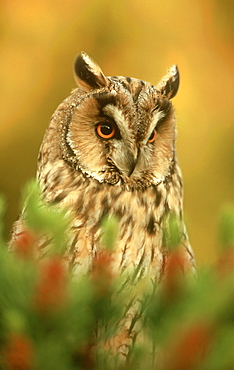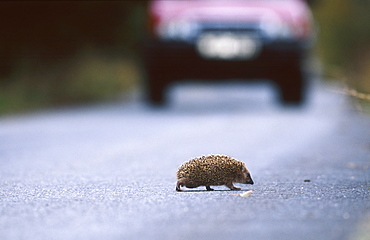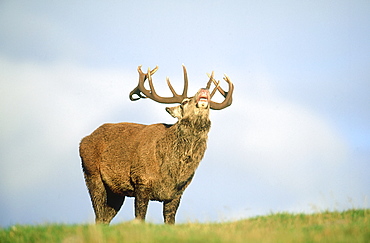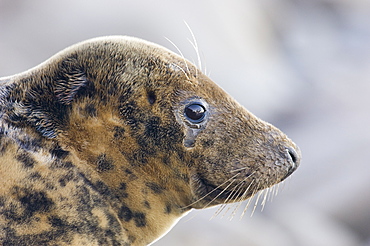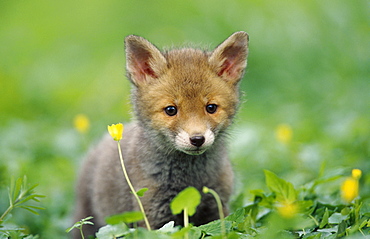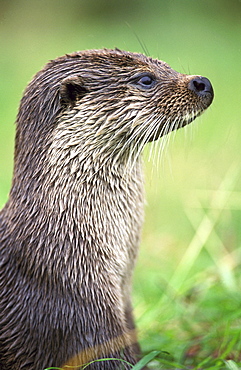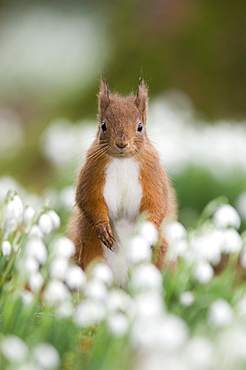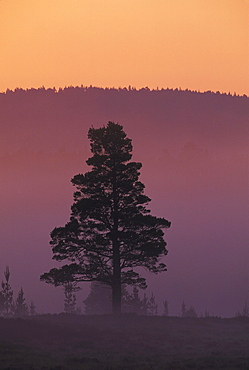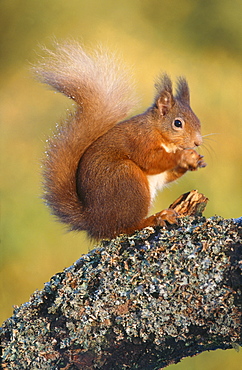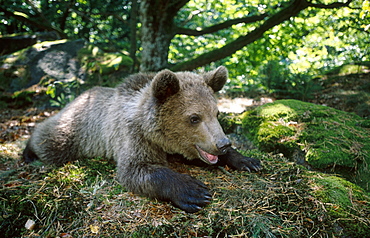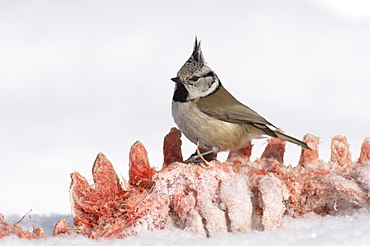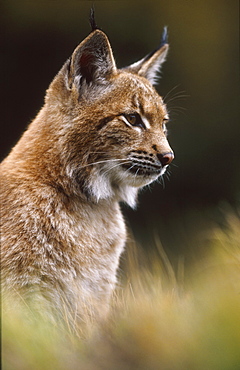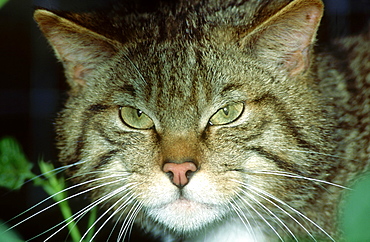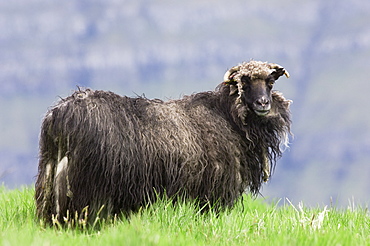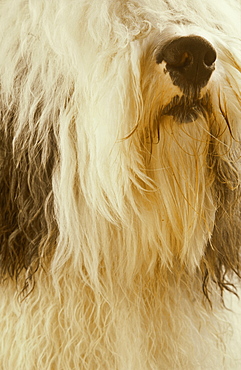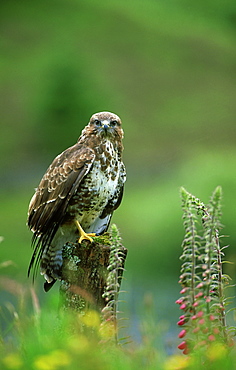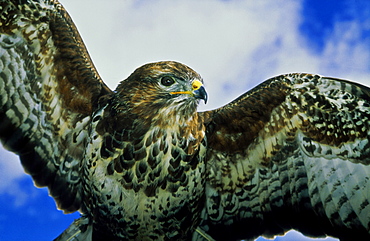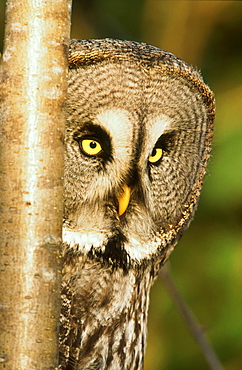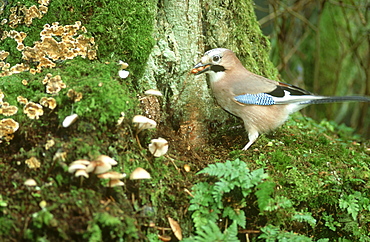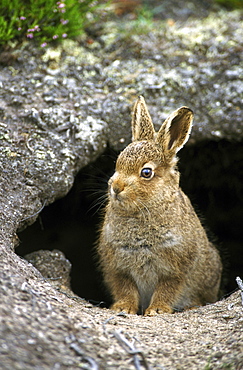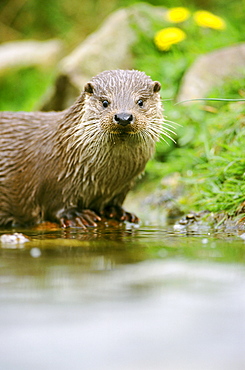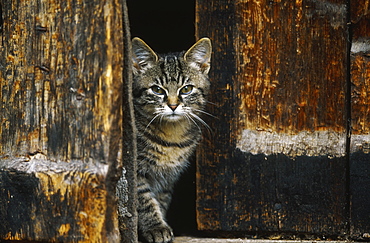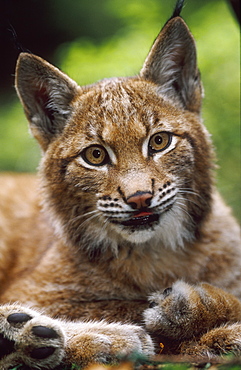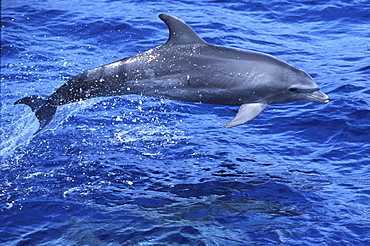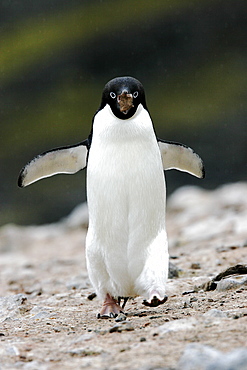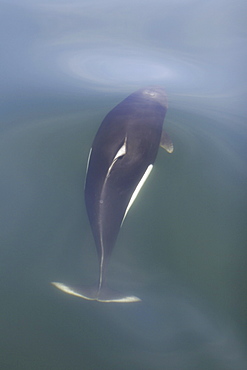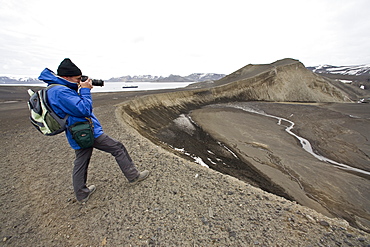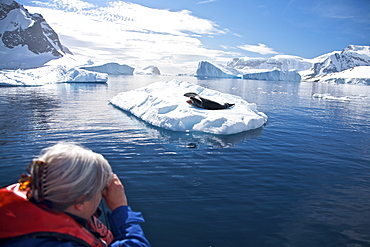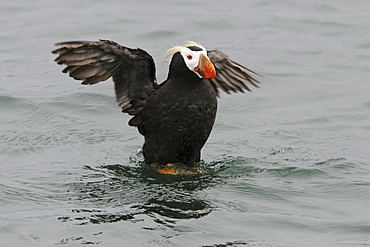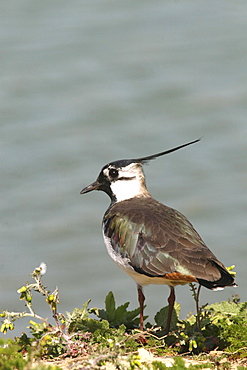Results
« Previous 1 2 3 4
346 results found
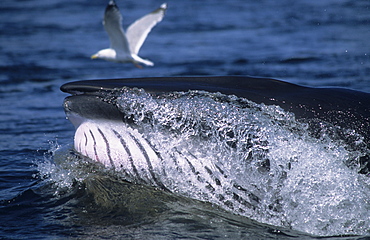
Closeup of a the mouth tip of a lunging Minke whale (Balaenoptera acutorostrata). To extract the engulfed fish the whale purges water through a slight opening between its lips. St. Lawrence estuary, Canada
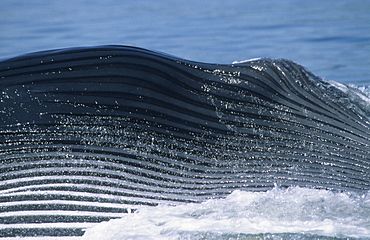
Closeup of the expanded grooves of a giant Blue whale (Balaenoptera musculus) during a lateral lunge, a feeding strike occasionally seen in the St. Lawrence estuary, Canada.
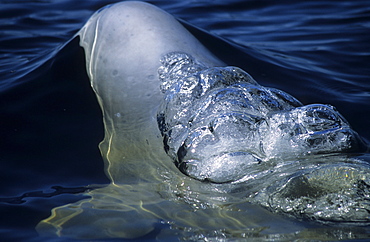
Just before surfacing a beluga whale (Delphinapterus leucas) exhales while its blowhole is still submerged creating large air bubbles. St. Lawrence estuary, Canada

A dense net of blood vessels colour the belly of Minke whales (Balaenoptera acutorostrata) named Picasso pink during high feeding activity. St. Lawrence estuary, Canada
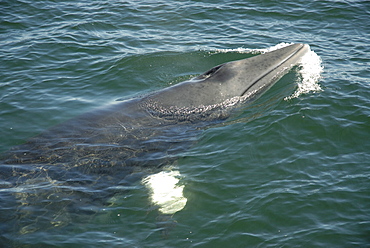
The white flipper band of a Minke whale (Balaenoptera acutorostrata) is visible through the greenish water. This distinctive feature is characteristic of Minke whales of the northern hemisphere and the most obvious difference to their relatives in the Antarctic. St. Lawrence estuary, Canada
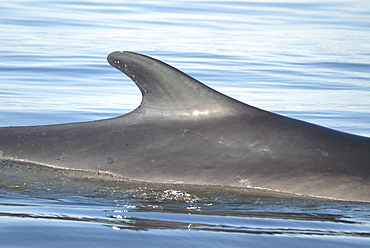
Tall dorsal fin of a Finback whale (Balaenoptera physalus) which is located far back along the dorsal ridge. This prominent feature is often used for identification. St. Lawrence estuary, Canada
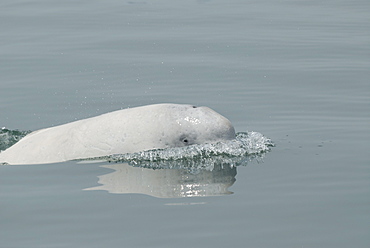
Juvenile Beluga whale (Delphinapterus leucas), an endangered and protected species, lifts its head to take a look at the research vessel. Beluga calves are dark in colour and turn white at seven to nine years of age. St. Lawrence estuary, Canada
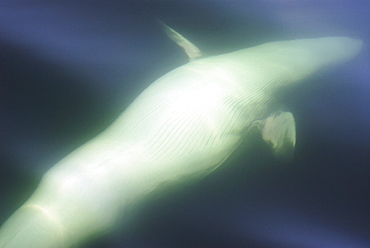
A friendly Minke whale (Balaenoptera acutorostrata) has rolled onto its right side to take a better look at the excited people on the boat. Note that the left eye is open. St. Lawrence estuary, Canada
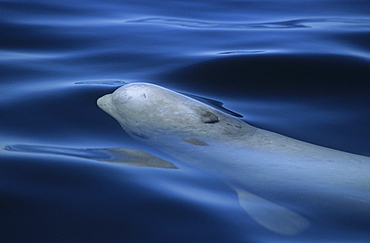
Only for a few seconds the blowhole of a surfacing beluga whale (Delphinapterus leucas) is exposed and free of water. St. Lawrence estuary, Canada Sequence 1/3.
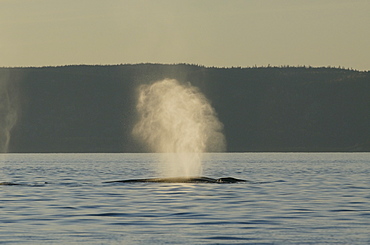
Tiny water droplets catch the last light of the setting sun as this Finback whale (Balaenoptera physalus) exhales blasting the air compressed in its huge lungs high into the air. St. Lawrence estuary, Canada

Harbour porpoise (Phocoena phocoena) arching its back to dive just as its giant relatives do. However, these small cetaceans donÃŒt dive as deep. St. Lawrence estuary, Canada (RR)
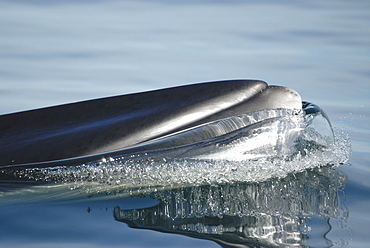
What is more beautiful? The harmonically formed tip of the Minke whaleÃŒs (Balaenoptera acutorostrata) snout or the water bubble along its lips? St. Lawrence estuary, Canada

Oblique lunge of a Minke whale (Balaenoptera acutorostrata) named Crowsfoot who has performed all feeding manoeuvre types known from the St. Lawrence estuary, Canada

Like a piece of art thousands of waterdrops cover the expanded belly of a Minke whale (Balaenoptera acutorostrata) performing a ventral arc. St. Lawrence estuary, Canada
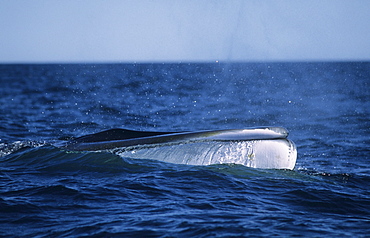
The white tip of a Finback whaleÌs (Balaenoptera physalus) snout showing a distinctive characteristic of this species; the lower right jaw is white in colour whereas the left side is dark. Gasp», Canada

Unusual scratches and impermanent patches on the skin of a Minke whale (Balaenoptera acutorostrata) known as Otter who was first identified in the St. Lawrence estuary, Canada, in 1996.
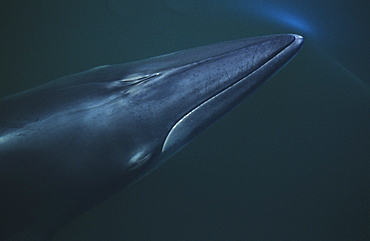
The pointy snout of a surfacing Minke whale (Balaenoptera acutorostrata) keeping its blowholes tightly closed until the moment they break the surface. St. Lawrence estuary, Canada
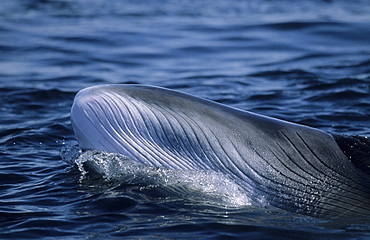
Closeup of a Minke whale (Balaenoptera acutorostrata) showing the beautiful pattern of parallel grooves near the tip of the snout. St. Lawrence estuary, Canada

The result of a strong head slap of a Minke whale (Balaenoptera acutorostrata). Such a splash supposedly scares shoaling fish that are known to cluster when threatened. St. Lawrence estuary, Canada
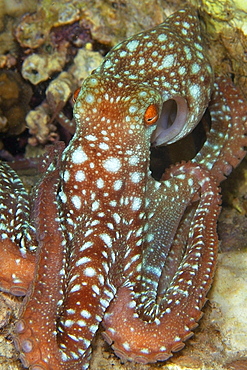
Starry night octopus (Octopus luteus) foraging on coral reef at night, Malapascua, Cebu, Philippines, Visayan Sea, Southeast Asia, Asia
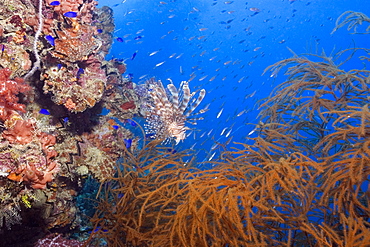
Lionfish, Pterois volitans, and soft coral, Rumphella sp., and frame silhouette, Shinkoku Maru shipwreck, Truk lagoon, Chuuk, Federated States of Micronesia, Caroline Islands, Micronesia, Pacific Ocean, Pacific
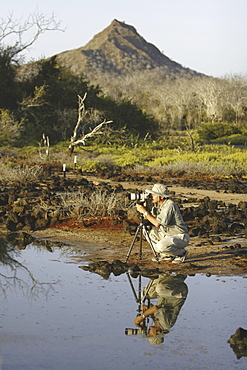
Photo class participant Douglas Wilcox taking images in the Galapagos Island Archipeligo, Ecuador. Model release number DW0507.

Adult bull Southern elephant seal (Mirounga leonina) hauled out and in a wallow while molting on the beach at Fortuna Bay on South Georgia Island, southern Atlantic Ocean.
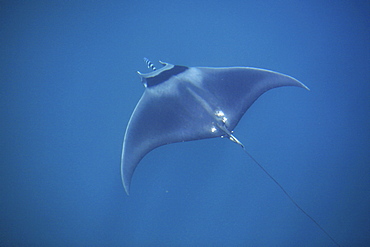
An adult spinetail mobula (Mobula japanica) cruising the surface in the calm waters off Isla del Carmen in the Gulf of California (Sea of Cortez), Baja California, Mexico.
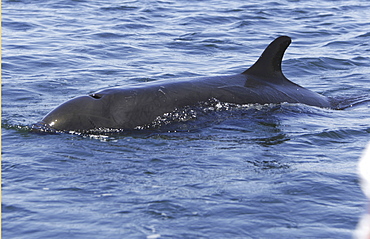
False-killer whale (Pseudorca crassidens) surfacing near Zodiac off Isla San Esteban in the midriff region of the Gulf of California (Sea of Cortez), Mexico
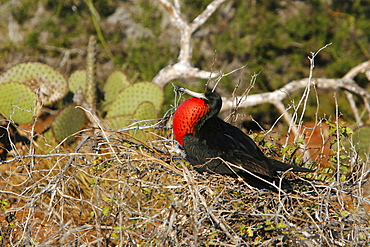
Male great frigate bird (Fregata minor) displaying with bright red gular pouch on nesting and breeding site on North Seymour Island in the Galapagos Island Group, Ecuador. Pacific Ocean.

Young southern elephant seals (Mirounga leonina) with excited visitor on the beach at South Georgia in the Southern Ocean
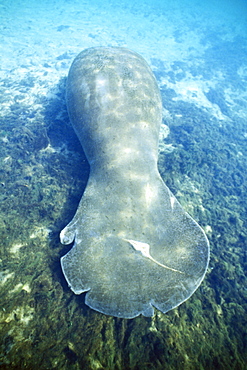
Adult West Indian Manatee (Trichechus manatus) resting (note propeller scars on tail) in Homosassa Springs, Florida, USA.
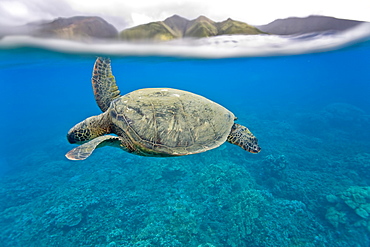
Green sea turtle (Chelonia mydas) off Olowalu Reef on the west side of the island of Maui, Hawaii, USA.
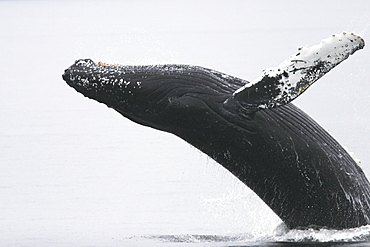
Adult humpback Whale (Megaptera novaeangliae) breaching near the Five Fingers Island Group in Southeast Alaska, USA. Pacific Ocean.

An adult kelp gull (Larus dominicanus) in flight near the Antarctic peninsula in the southern ocean. This is the only gull regularly found in the Antarctic peninsula to a latitude of 68 degrees south.
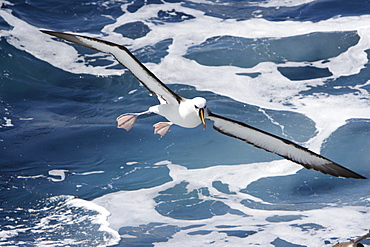
Adult yellow-nosed albatross (Thalassarche chlororhynchos) on the wing in the oceanic waters surrounding the Tristan da Cunha Island Group in the South Atlantic Ocean.
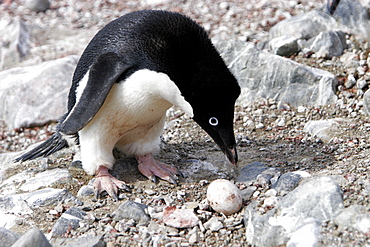
Adult Adelie penguin (Pygoscelis adeliae) inspecting a non-viable egg at Devil Island, Antarctic Peninsula. Adelie penguins are truly an ice dependant penguin species.
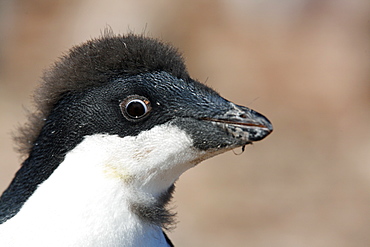
Adelie penguin chick (Pygoscelis adeliae) fledging its downy feathers for the adult feathers underneath on Devil Island, Antarctica.
